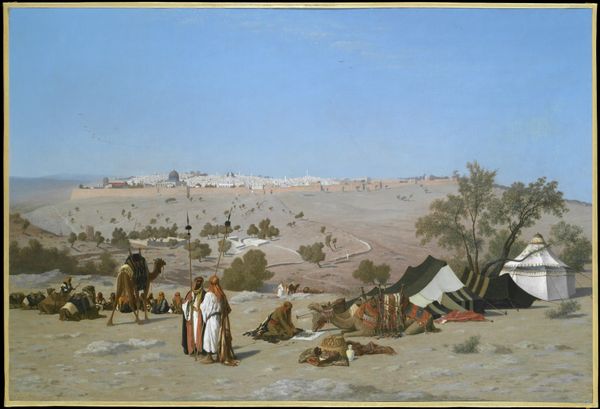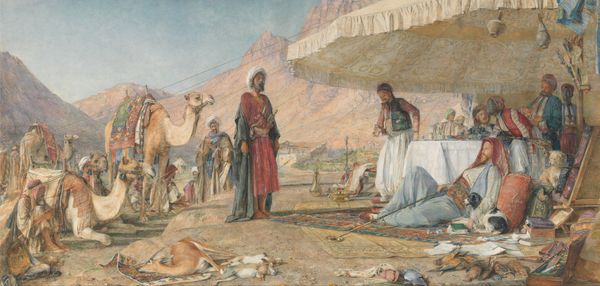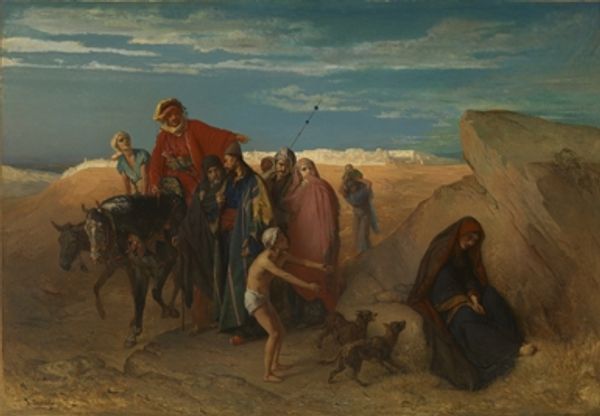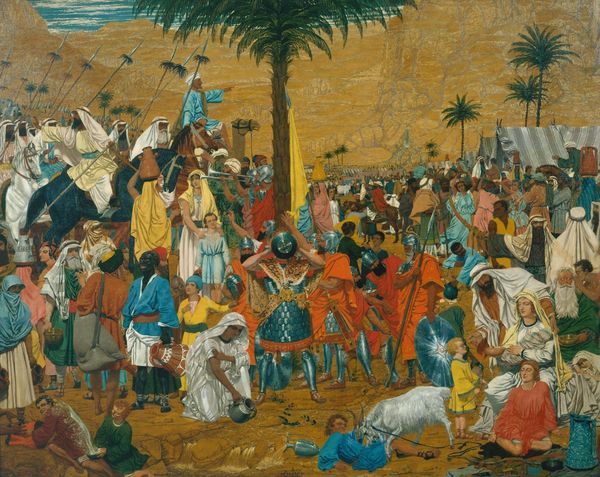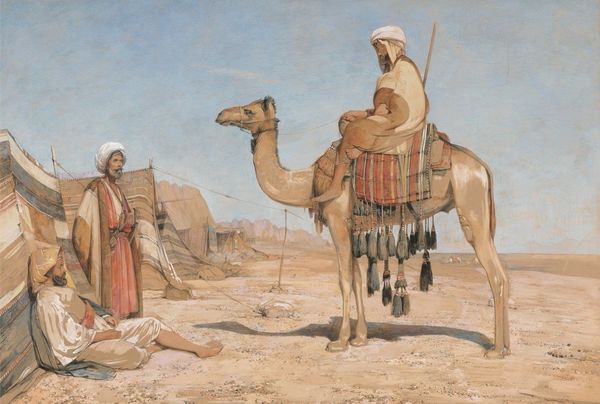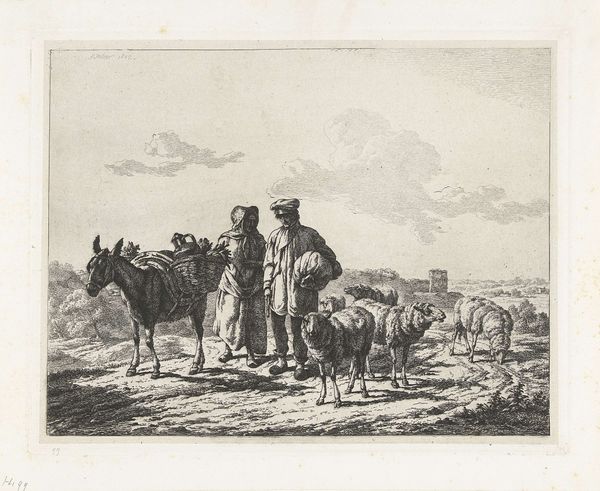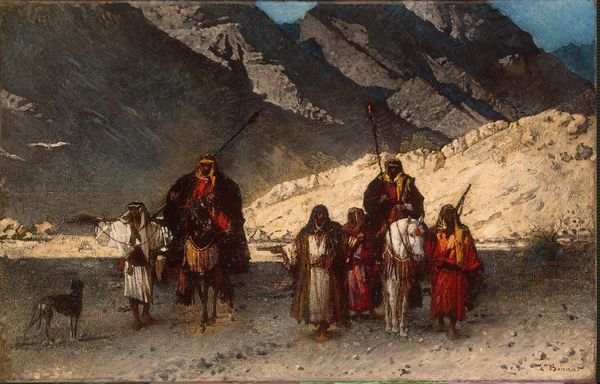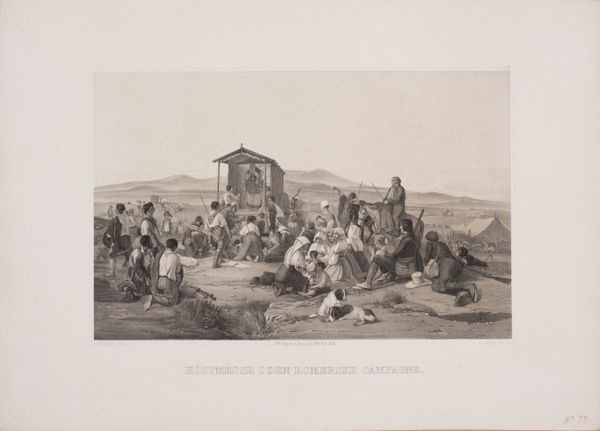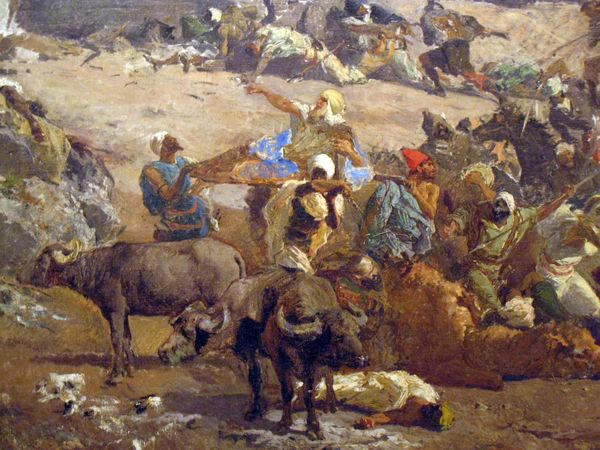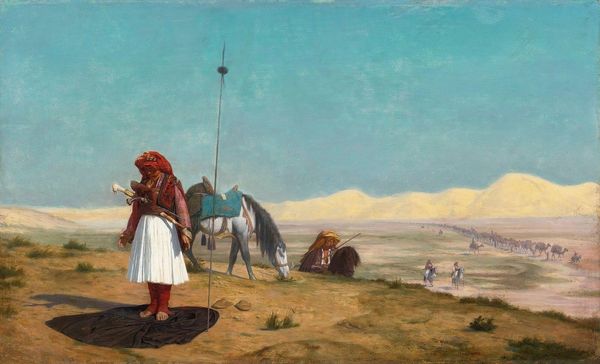
Halt of Caravans at the Wells of Saba (Beersheba) in the Desert South of Hebron 1850
0:00
0:00
oil-paint
#
oil-paint
#
landscape
#
oil painting
#
romanticism
#
orientalism
#
genre-painting
Dimensions: 43 1/2 x 55 in. (110.5 x 139.7 cm)
Copyright: Public Domain
Editor: This is "Halt of Caravans at the Wells of Saba" by Charles de Coubertin, painted around 1850. It's an oil painting and has a very dreamlike quality to it. What can you tell me about its context? Curator: Well, this painting reflects the 19th-century European fascination with the "Orient". It fits squarely within the artistic movement of Orientalism, a Romantic imagining of the Middle East. It often romanticized or exoticized Eastern cultures. Note the emphasis on the picturesque and seemingly timeless quality of nomadic life. The very title, referencing Beersheba, invokes Biblical connections and layers a historical narrative onto the scene. What impact do you think these factors have on a contemporary viewer? Editor: I guess it shows how the West viewed these regions. It's not necessarily an accurate depiction, but rather a construction based on European fantasies. Curator: Precisely. Consider who would have been the audience for this painting. These works served to reinforce existing power structures and narratives. The idea of a timeless, unchanging East served to justify Western intervention and colonization. Coubertin presents a specific point of view: that of a privileged observer looking upon an unfamiliar culture. Editor: So the art market at the time helped shaped these biased perspectives. The consumption of exotic scenes became popular due to its rarity and imagined aesthetic value, perpetuating stereotypes. Curator: Yes, indeed! It also shaped artistic representation. And conversely, these paintings, exhibited in prominent venues, played a role in perpetuating those societal perceptions. It shows the circularity of influence. Now, reflecting on this, do you think understanding this history changes the way you view this artwork today? Editor: Definitely! It's not just a pretty scene, but also a loaded image with a complicated history. This makes me want to research about how the people in the region felt about being depicted.
Comments
No comments
Be the first to comment and join the conversation on the ultimate creative platform.
